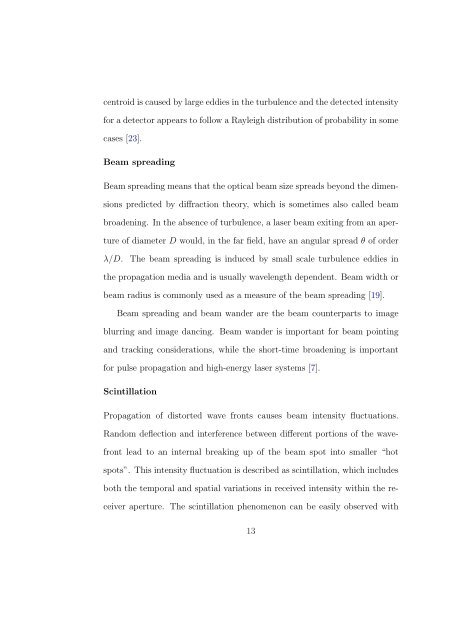OPTIMAL BEAM FORMING FOR LASER BEAM PROPAGATION ...
OPTIMAL BEAM FORMING FOR LASER BEAM PROPAGATION ...
OPTIMAL BEAM FORMING FOR LASER BEAM PROPAGATION ...
You also want an ePaper? Increase the reach of your titles
YUMPU automatically turns print PDFs into web optimized ePapers that Google loves.
centroid is caused by large eddies in the turbulence and the detected intensityfor a detector appears to follow a Rayleigh distribution of probability in somecases [23].Beam spreadingBeam spreading means that the optical beam size spreads beyond the dimensionspredicted by diffraction theory, which is sometimes also called beambroadening. In the absence of turbulence, a laser beam exiting from an apertureof diameter D would, in the far field, have an angular spread θ of orderλ/D. The beam spreading is induced by small scale turbulence eddies inthe propagation media and is usually wavelength dependent. Beam width orbeam radius is commonly used as a measure of the beam spreading [19].Beam spreading and beam wander are the beam counterparts to imageblurring and image dancing. Beam wander is important for beam pointingand tracking considerations, while the short-time broadening is importantfor pulse propagation and high-energy laser systems [7].ScintillationPropagation of distorted wave fronts causes beam intensity fluctuations.Random deflection and interference between different portions of the wavefrontlead to an internal breaking up of the beam spot into smaller “hotspots”. This intensity fluctuation is described as scintillation, which includesboth the temporal and spatial variations in received intensity within the receiveraperture. The scintillation phenomenon can be easily observed with13
















